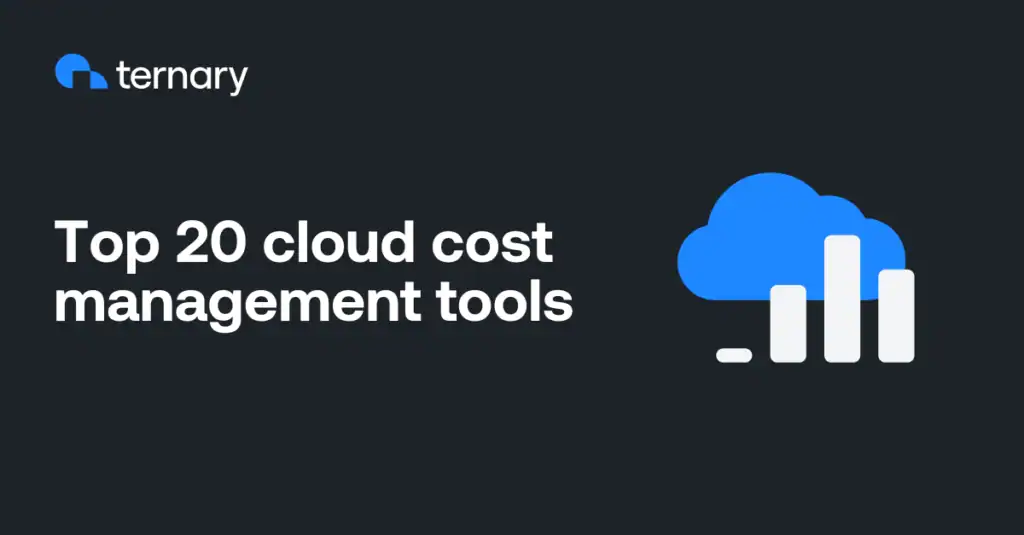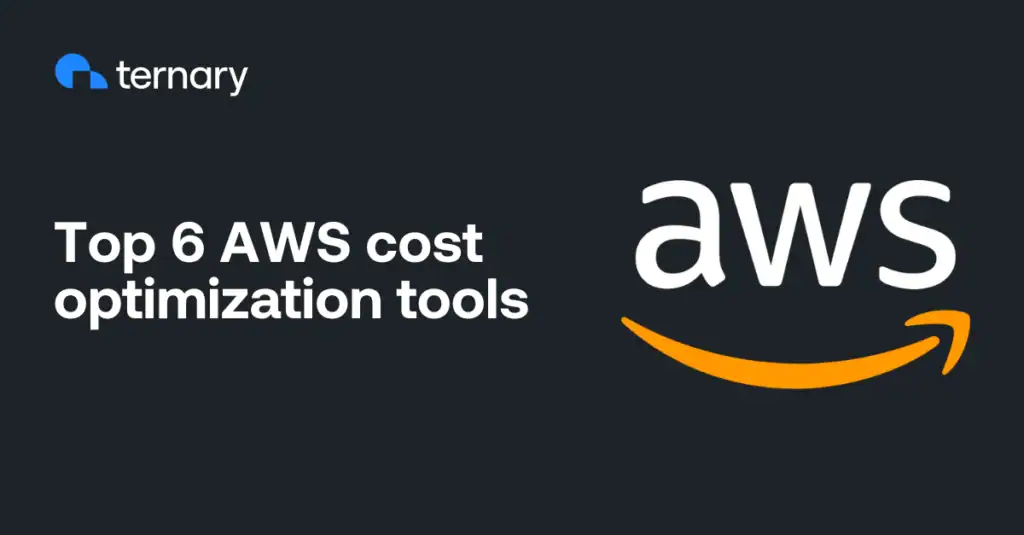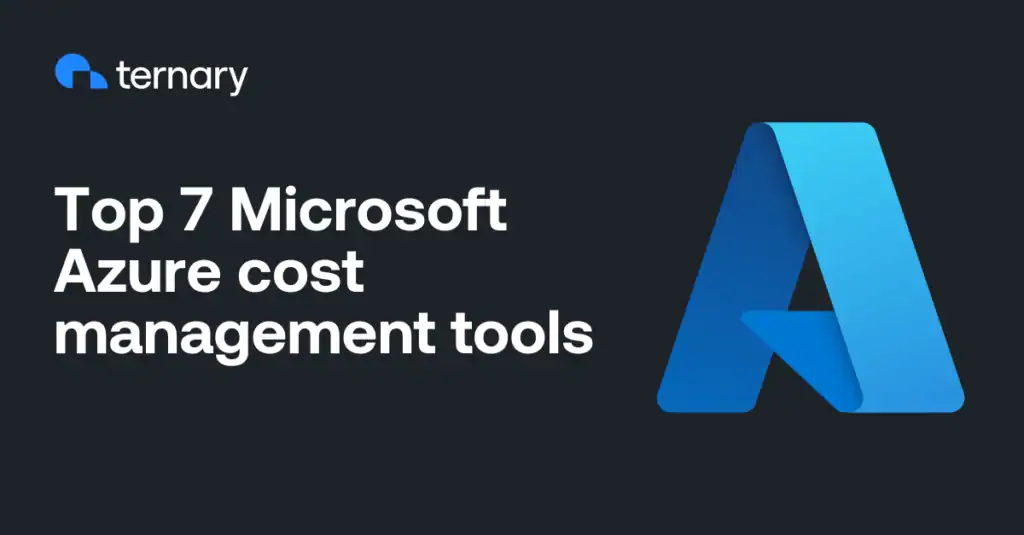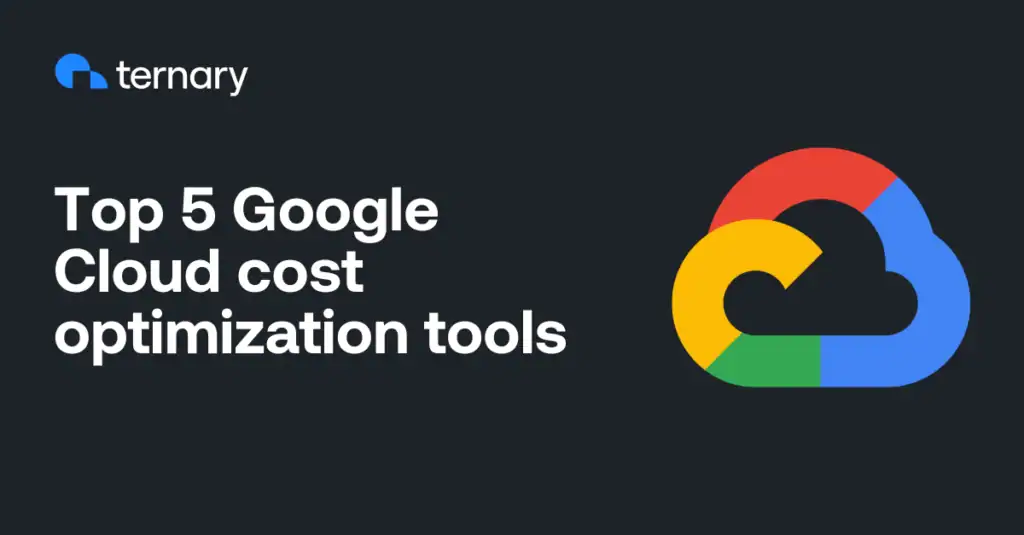Remember when the cloud used to be marketed like an all-you-can-eat buffet for pennies? Fast forward to today, and those pennies have formed a full-blown avalanche, one that’s burying CFOs and burning holes in budgets. Developer teams are learning the hard way that cloud costs can spiral out of control faster than they realize. That’s exactly why cloud cost management tools exist: to bring order to this chaos.
In this guide, we’ll start by breaking down what cloud cost management really means. Then, we’ll walk you through 20 powerful cost management solutions that can help your organization rein in spend without slowing innovation.
What is cloud cost management?
Cloud cost management is the practice of tracking, analyzing, and optimizing cloud expenditures to eliminate waste, improve efficiency, and align spending with business value.
As organizations increasingly adopt multi-cloud, hybrid, and serverless architectures, cloud bills grow more complex due to spanning multiple providers, services, and pricing models (e.g., pay-as-you-go, reserved instances, spot instances).
Without proactive management, costs can spiral due to unused resources, over-provisioning, or lack of visibility into how spend maps to revenue.
Cloud cost management enables teams to:
- Eliminate wasteful spend (e.g., orphaned volumes, over-provisioned databases).
- Leverage discount programs and pricing models (e.g., AWS Savings Plans, Azure Hybrid Benefit etc.).
- Implement automation (scheduling, auto-scaling, and policy-driven cost controls).
- Reduce time wasted on manual cost audits with AI-powered anomaly detection.
- Link spend to business outcomes (e.g., cost per customer, feature, or transaction).
Key benefits of cloud cost management
Here are some of the key benefits of cloud cost management:
- Allocate budgets precisely by team, project, or product.
- Predict future spend with forecasting based on historical trends.
- Quantify profitability per customer, feature, or service to prioritize investments.
- Justify cloud investments with ROI metrics tied to revenue.
- Plan multi-cloud strategies by comparing cost-performance across providers.
- Align infrastructure scaling with business growth cycles (e.g., seasonal traffic spikes).
- Eliminate “cost blind spots” as new services (e.g., Kubernetes, serverless) are adopted.
- Redirect savings into R&D or high-impact projects.
- Turn savings into competitive advantage (lower prices, higher margins).
Not to mention, engineers see costs in their context (e.g., cost per deployment, microservice). Finance teams gain granular chargeback/showback capabilities. And leadership accesses unified reports linking spend to P&L.
Top cloud cost management tools
1. Ternary
Ternary stands out as the leading multi-cloud cost management solution. Modern enterprises often operate across Google Cloud, AWS, Azure, Alibaba, Oracle, and third-party SaaS providers. However, this multi-cloud model results in fragmented billing data that can span millions of line items daily. That’s why Ternary combines deep, native expertise in individual cloud providers with a unified multi-cloud platform, empowering finance, engineering, and FinOps teams across organizations.
Purpose-built for FinOps, Ternary delivers granular cost visibility, actionable optimization recommendations, and real-time anomaly detection. Its powerful allocation and tagging capabilities ensure accurate spend tracking in even the most complex environments. Additionally, managed service providers (MSPs) benefit from Ternary’s multi-tenant design and robust customer management capabilities, enabling them to deliver differentiated FinOps services to customers worldwide.
In short, why do customers choose Ternary?
- Built for scale: Ternary leverages Google BigQuery to deliver serverless, infinitely scalable cost analytics. The platform manages billions of dollars in annual cloud spend.
- Flexible and agentless deployment: Its agentless architecture and the ability to deploy as a SaaS or Self-Hosted solution give customers the flexibility of choice.
- Self-service customization: Teams define their own cost labels and can build multi-cloud reports and dashboards easily.
- True multi-cloud coverage: Has feature parity across the three leading cloud providers: GCP, AWS, and Azure
- Profit-centric cloud spend optimization: Moves beyond cost tracking to unit economics and business-aligned decision-making.
Whether you’re a finance leader seeking to align budgets with usage, an engineer aiming to reduce waste, or an MSP managing diverse client infrastructures, Ternary delivers the precision, scale, and cross-cloud insight you need to take control of costs and maximize cloud ROI.
2. CloudHealth
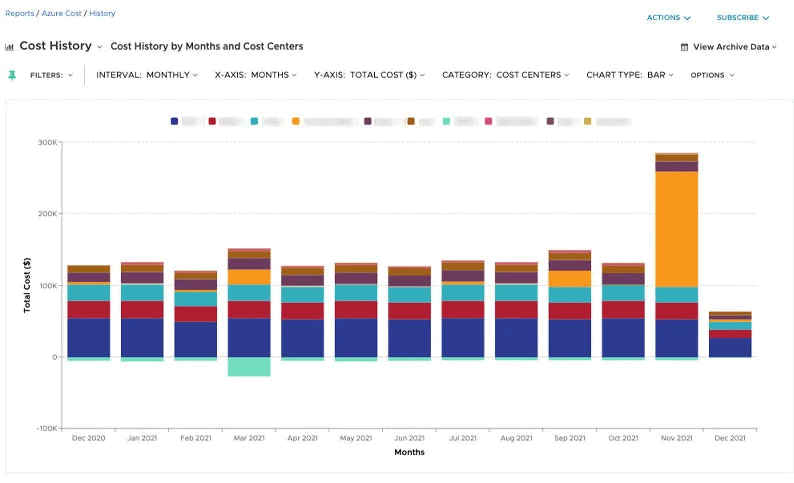
CloudHealth (formerly VMware Tanzu CloudHealth by Broadcom) is a strong contender for governance-focused enterprises that require centralized oversight across AWS, Azure, GCP, and VMware environments. Its strengths lie in combining robust cost visibility with governance and security monitoring.
Key features:
- FlexOrgs and Perspectives for advanced role-based access control and customized business groupings.
- Automated commitment-based discount management (For AWS).
- Governance policy engine to enforce budget, optimization, and security rules etc. MSPs also benefit from its ability to maintain strict policy enforcement across diverse client infrastructures.
CloudHealth excels in AWS-heavy multi-cloud environments that prioritize control.
3. IBM Cloudability
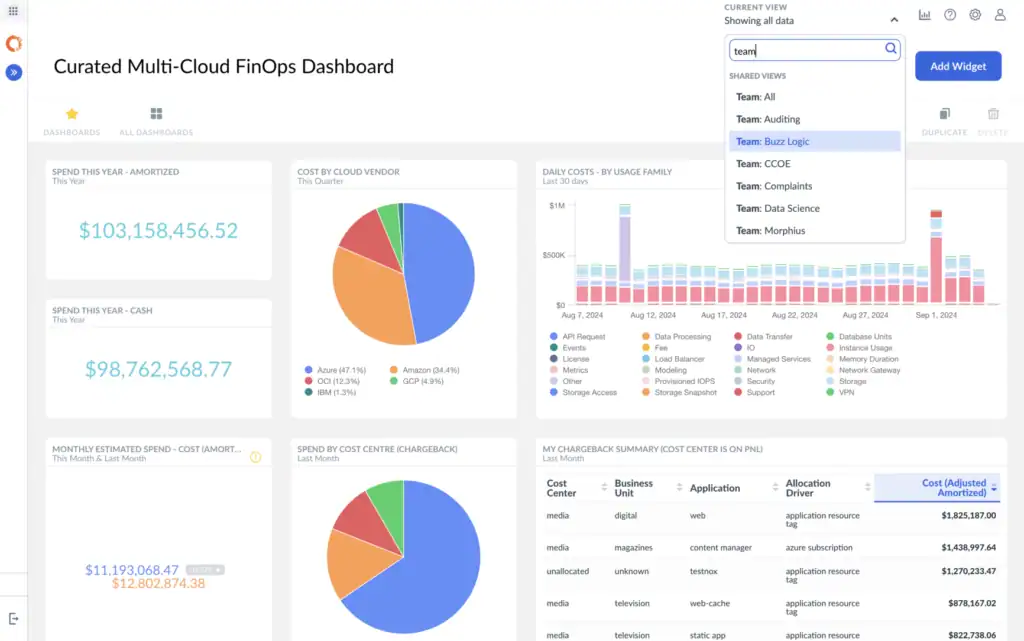
IBM Cloudability (formerly Apptio Cloudability) is a first-generation cloud cost management solution, particularly well-suited for finance-driven FinOps teams.
Key features:
- Business mapping to group costs by business units, projects, or functions.
- Reserved instance purchasing strategies and workload planning so that businesses can match upcoming demand to the right instance types ahead of time.
- KPI scorecards for gamification and driving efficiency across teams.
Cloudability’s native integration with ApptioOne further enhances its value for CIO-level planning and IT financial management, making it a strategic tool for organizations seeking alignment between cloud spend and business objectives.
For practitioners interested in adopting a suite of tools, IBM now offers several FinOps solutions. These include Cloudability for cloud cost management, IBM Turbonomic for application resource management and cloud optimization, Kubecost for Kubernetes native cost visibility and optimization, and IBM Instana for observability.
4. Finout
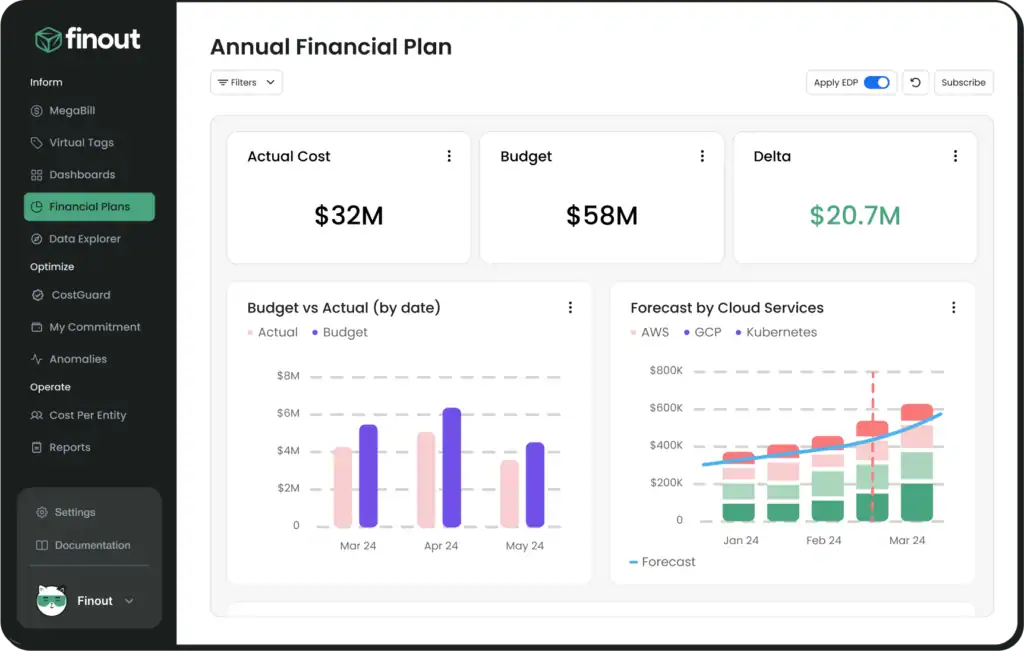
Finout has earned a strong reputation—particularly in the EMEA region—as one of the best cloud cost management tools for teams needing multi-cloud visibility. In fact, its signature “MegaBill” consolidates billing data from multiple providers into a single, unified view. As a result, finance and engineering teams gain an easily digestible picture of their infrastructure spend.
Key features:
- Shared cost reallocation. Finout is especially valuable for organizations managing chargebacks across teams.
- Financial planning. The platform lets users create financial plans to track budgets and forecasts. These plans are customizable by hierarchy, virtual tag, etc.
- Waste detection. Finout’s CostGuard feature flags idle resources, underutilized instances, and savings opportunities so you can take action before costs balloon.
Finout is a powerful tool for AWS-focused or multi-cloud organizations that prioritize centralized visibility and granular cost allocation, but less comprehensive for teams seeking deep optimization across all cloud providers.
5. Flexera
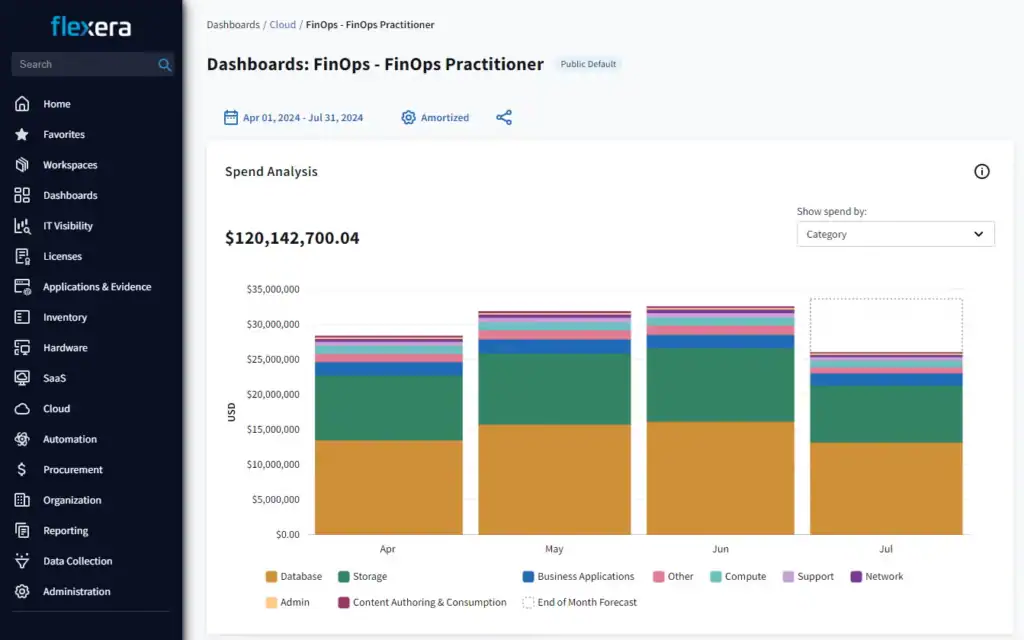
Flexera is a powerful cloud management solution known for its broad coverage across FinOps, IT asset management, SaaS spend management, and software license optimization. Like IBM, Flexera now offers a portfolio of cost management tools including Flexera One, Spot by NetApp, and CloudCheckr.
For example, Spot by NetApp (now acquired by Flexera) may have changed names a few times (Spotinst, then Spot). However, one thing hasn’t changed: its ability to automate workload placement to the most cost-efficient resources in real time, maximizing savings without compromising performance.
In addition, CloudCheckr is a first-generation cost management solution that excelled in cost governance and security monitoring. Specifically, its engine performs hundreds of best practices checks across your environment to scan for idle resources and security misconfigurations.
Key features:
- Unified view of hybrid cloud costs in a single dashboard
- Automated catalog for acting on optimization recommendations
- Advanced cost allocation for chargebacks
- Spot by NetApp’s real-time, automated optimization of cloud workloads, often leveraging spot instances
- CloudCheckr’s white-label reporting for resellers and managed service providers
- CloudCheckr’s built-in support for public sector compliance and governance
For enterprises seeking a single vendor to manage financial visibility across cloud and non-cloud IT assets, Flexera offers a comprehensive solution.
6. CloudBolt

CloudBolt is purpose built for busy teams juggling public cloud, containers, on‑premises infrastructure, and even private cloud setups. It’s most well-known for hybrid cloud management and its self-service IT portal. The platform gives you a clear view of your costs, regardless of where they’re coming from, and helps cut waste without relying on random guesswork.
Key features:
- Ensures tagging compliance, budget enforcement, and consistent cost governance with its policy engine.
- Helps reduce waste with automation with its Continuous Optimization via Cloud Native Actions (CNA) feature
- Integrates well with existing ITSM and DevOps tools, making it attractive for enterprises with complex infrastructures.
7. CloudZero
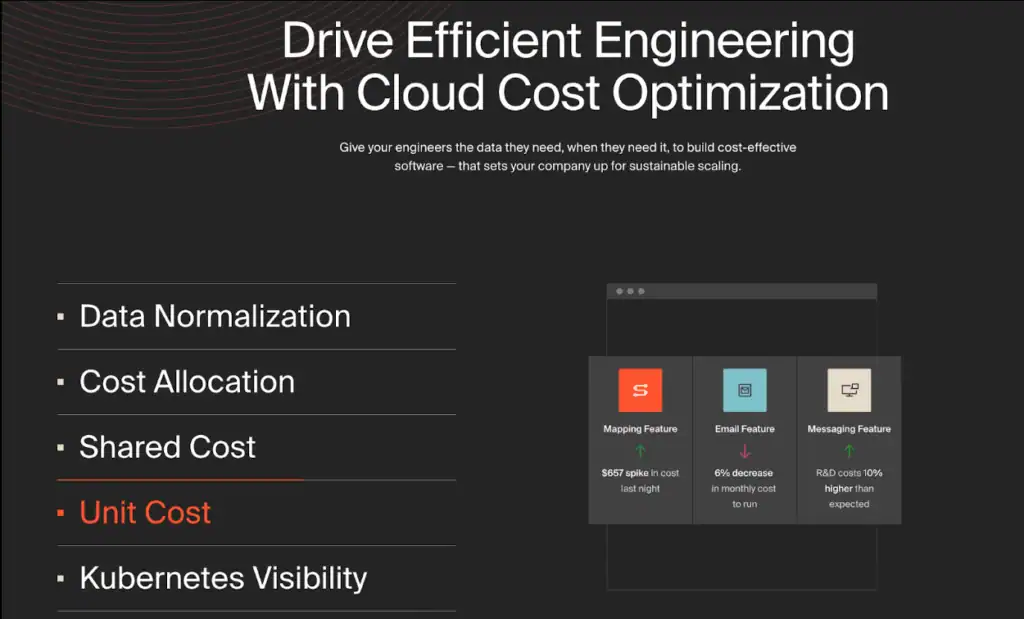
CloudZero is a second-generation cloud cost management platform that delivers real-time, per-unit cost insights. Similar to Ternary, CloudZero calculates unit economics across every dimension, including:
- Cost per Customer. How much does each customer or tenant cost to support?
- Cost per Feature. Which product features are the most (or least) cost-efficient?
- Cost per Deployment/Service/Team. Engineers see costs in their language, enabling smarter architecture decisions.
- Cost per Environment. Compare production vs. development spend to eliminate waste.
Key features:
- Provides visibility across AWS, Azure, GCP, and Kubernetes.
- Automatically allocates 100% of spend, without heavy tagging dependencies.
- Makes cloud spend management easy by tying it to customer, product, and feature value.
Note: CloudZero focuses primarily on visibility and cost intelligence rather than multi-cloud optimization so teams may need to pair it with other tools, like ProsperOps, to take direct cost-saving actions.
8. Vantage

Vantage is a cloud cost observability tool built for multi-cloud and SaaS visibility. It’s known for its clean, intuitive interface and fast onboarding compared to first-generation platforms.
Below are some of Vantage’s key features:
- Lets teams slice and dice costs across dimensions (tags, business units, accounts) with hierarchical reporting, virtual tagging, and unit-cost metrics
- Automates purchases of AWS Savings Plans based on usage insights.
- Delivers AWS network flow reports to map data transfer costs.
It excels as a lightweight, user-friendly visibility tool, particularly for AWS cost optimization.
9. Google Cloud Cost Management
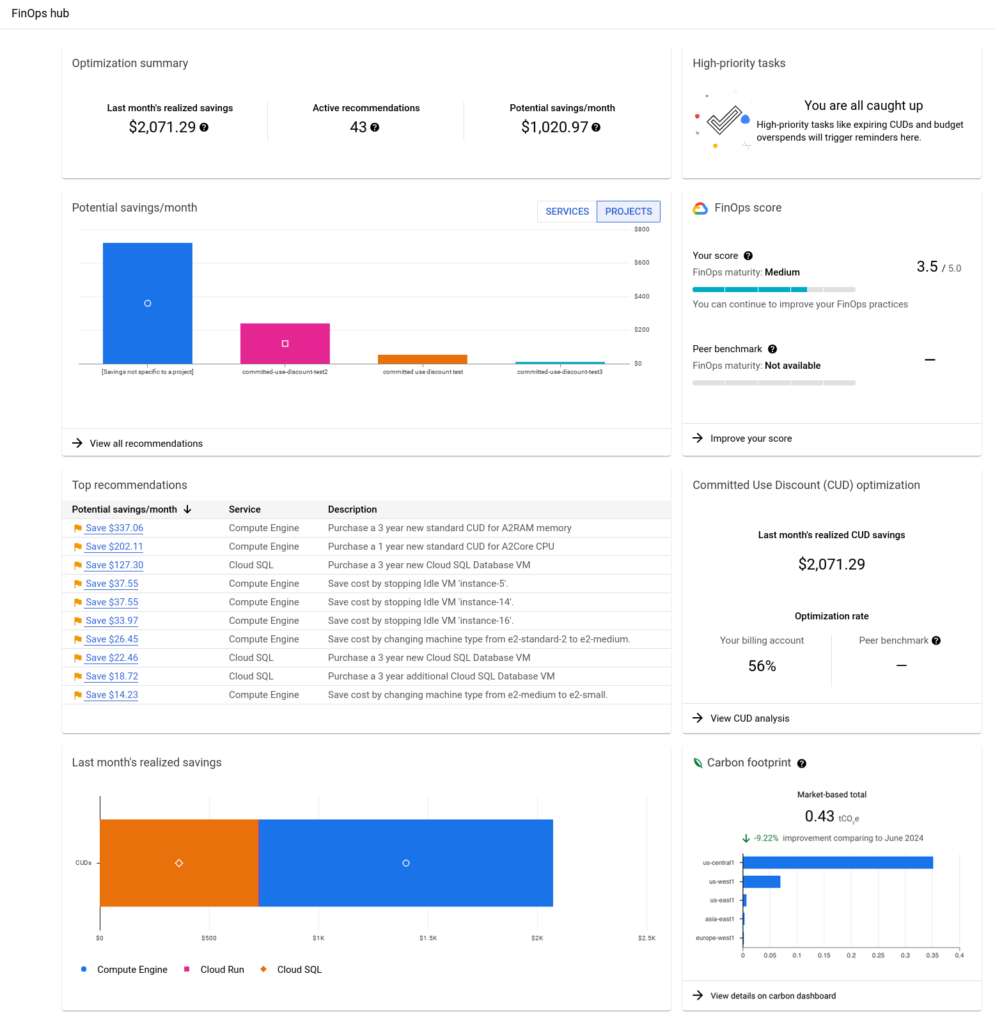
Google Cloud has several native cloud cost management tools under its umbrella. Though at the core of the platform are the Cloud Billing Reports and FinOps Hub.
Key features:
- Visual and tabular cost tracking through Billing Reports and FinOps Hub
- Resource-level management with granular controls and hierarchy mapping
- Looker Studio dashboards for custom reporting
- FinOps consulting with Google experts to structure your cloud finance team
Reports give you a visual pulse check on your cloud spending trends. On the other hand, cost tables offer deep, line-item breakdowns that make invoice reconciliation as satisfying as checking something off a to-do list. Google is one of the more data-savvy native cloud optimization tools on the market.
10. AWS native tools
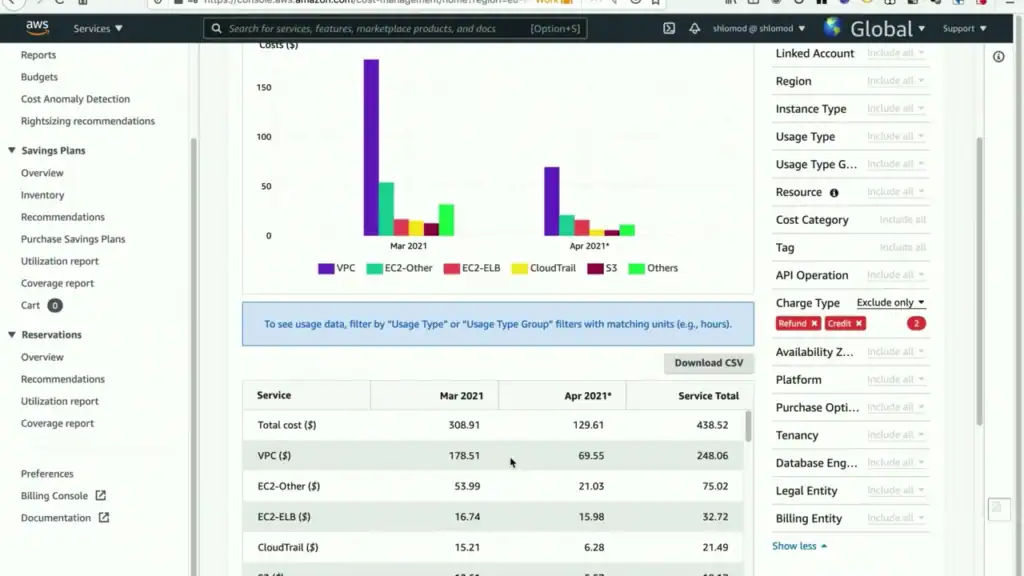
AWS offers a native cloud financial management suite that is a collection of control knobs for your spending. And while it might not have the flashy UX of some third-party platforms, it’s deeply integrated, which means you get precision-level cost insights without duct-taping external tools to your stack.
The core lineup includes:
- AWS Cost Explorer: Granular cost analysis and forecasting
- Budgets: Budget enforcement and alerting
- Cost Anomaly Detection: Machine learning-powered cost anomaly detection
- Reserved Instances and Savings Plans: Discount optimization
- AWS Trusted Advisor: Best practice checks across cost optimization, performance, security etc.
For AWS-only organizations getting started in the cloud, these tools work well.
11. Microsoft Azure Cost Management

Microsoft Azure Cost Management provides colorful, detailed visualizations to show exactly which services are eating up your cloud dollars.
It lets you define and manage budgets across multiple subscriptions, track anomalies, and forecast upcoming costs with a decent level of accuracy.
Additionally, it plugs into Azure Advisor for personalized recommendations and works seamlessly with Azure Resource Manager for control over your deployments.
Key features:
- Visual cost tracking with detailed insights by subscription, department, or service
- Forecasting tools and budget alerts to prevent surprise overages
- Reserved Instance and Savings Plan suggestions for long-term savings
- AI-driven anomaly detection to flag suspicious spending patterns
- Full Azure integration with Advisor, Resource Manager, and more
For Azure-only organizations, fewer third-party tools offer strong FinOps coverage, so many rely on Microsoft’s native toolset.
12. Harness

Harness started as a CI/CD platform for DevOps teams, but now it helps enterprises embed cloud cost reduction right into the software delivery pipeline. The platform provides cost visibility across AWS, Azure, GCP, and Kubernetes environments.
With its “governance-as-code” model, Harness lets you embed compliance policies directly into workflows so teams can build fast, smart, and within budget.
Key features:
- Deep integration with CI/CD for real-time cost tracking and anomaly alerts
- Automatic detection and termination of idle resources via its Autostopping rules
- Container cost optimization with insights into usage patterns
13. ProsperOps

ProsperOps is an autonomous discount management solution. It focuses heavily on optimizing Reserved Instances and Savings Plans, and automates the entire lifecycle of purchasing, managing, and adjusting your commitment-based discounts.
The platform continuously monitors your resource usage and automatically adjusts your commitment portfolio.
Key features:
- Real-time management of discount instruments across AWS, Azure, and GCP
- Transparent savings reports and visualizations
- Performance-based pricing model—you only pay when you save
Note: ProsperOps is a point solution focused on rate optimization. Therefore, for full FinOps coverage, it’s best paired with a comprehensive FinOps platform.
14. Kion
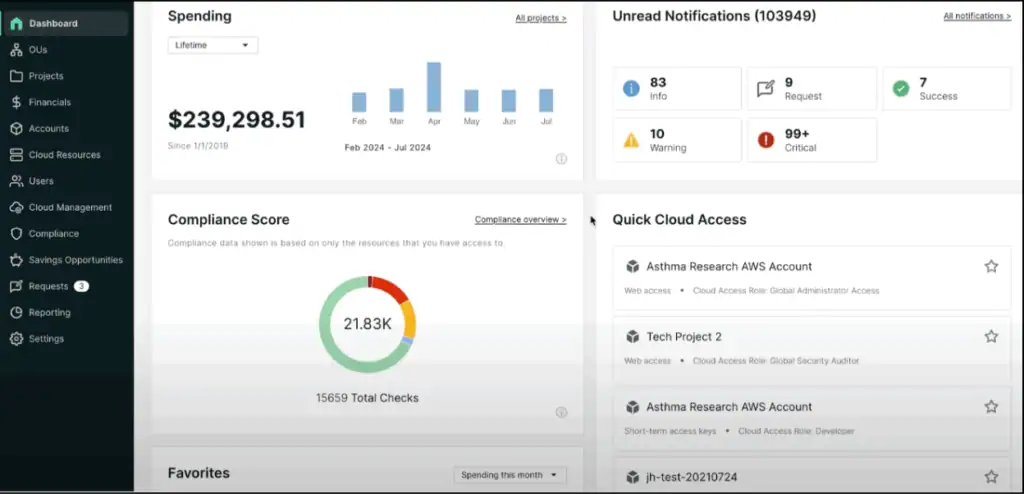
Kion is a cloud operations platform that helps teams keep costs, access, and policies under control. It’s only available as a self-hosted solution which makes it particularly attractive for highly regulated industries that want to maintain greater control over their data.
Whether you’re a finance lead or part of the engineering team, Kion makes it easier to stay aligned on budgets and usage.
Key features:
- Centralized spend tracking across AWS, Azure, GCP, and OCI.
- Budget guardrails with real-time alerts and policy enforcement
- Its governance-first approach ensures that all new cloud projects automatically inherit policies, permissions, and rules.
15. IBM Kubecost
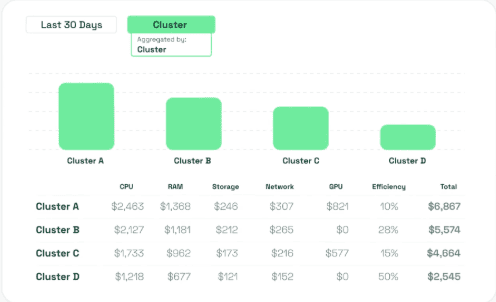
IBM Kubecost was built by people who’ve seen a Kubernetes cluster misbehave and vowed, “Never again.” Since then, it has provided multi-cluster and multi-cloud visibility. Kubecost runs in your cluster and provides real-time data on K8s spend and usage.
Key features:
- Real-time cost monitoring for Kubernetes clusters
- Detailed cost breakdown by namespace, deployment, and service
- Dynamic cost optimization recommendations
- Alerting on cost anomalies or deployment spikes
Note: Kubecost is a point solution focused on Kubernetes optimization. Therefore, for full FinOps coverage, it’s best paired with a comprehensive FinOps platform.
16. Datadog

Best known as a leading observability and monitoring platform, Datadog also provides cloud cost management. It ties usage data and cost metrics together, so engineers don’t have to wait for finance to flag budget issues. This means everything lives in one place, making it easier to fix problems fast and collaborate more closely across teams. Moreover, it aids you in pinpointing cloud waste early, along with any performance issues, so you don’t need to keep switching tools.
Key features:
- Datadog lets you view cost and usage side by side for real-time optimization
- It supports spend breakdowns by product, team, or service using flexible tagging
- Offers custom dashboards so teams can focus on metrics that matter to them
Datadog delivers strong observability and cost visibility but falls short in core FinOps functionality.
17. Cast AI
Cast AI continuously monitors Kubernetes clusters in real-time, using intelligent automation to scale resources up or down depending on actual workload demand.
Key features:
- Automatic pod scaling and node rightsizing to avoid overprovisioning
- Intelligent bin-packing to reduce waste and maximize efficiency
- Automated instance selection based on cost-performance balance
- Security automation is included to enhance DevOps workflows
Note: CastAI is a point solution focused on Kubernetes optimization. Therefore, for full FinOps coverage, it’s best paired with a comprehensive FinOps platform.
18. Densify
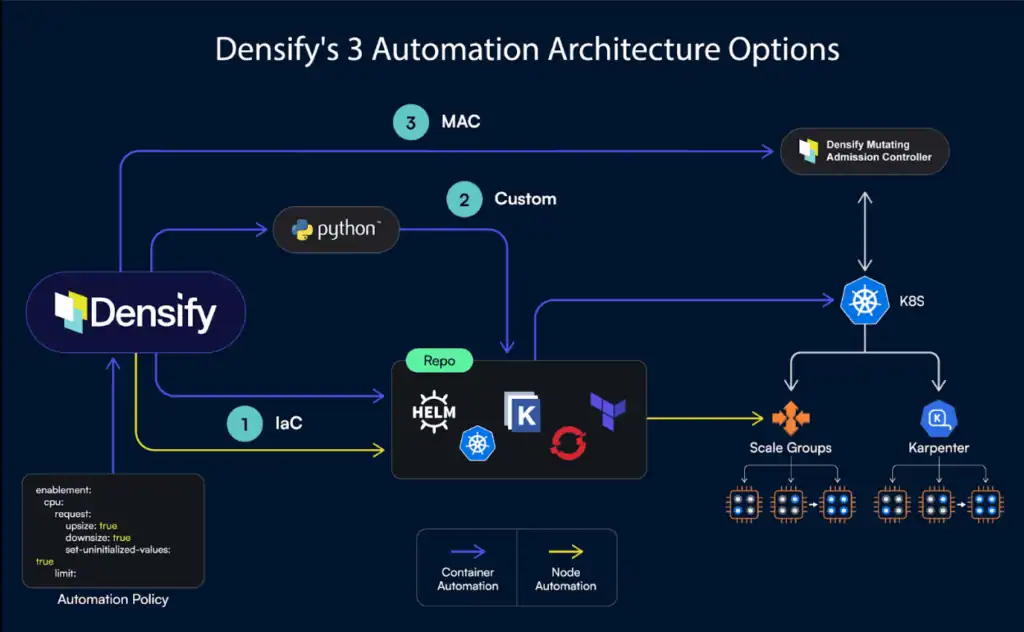
Densify is a cloud cost management tool analyzes patterns to recommend precise instance types and scaling configurations. It also distinguishes between resources that are elastic versus those bottlenecked by bad configurations.
The tool’s modeling delivers clear, business-readable reports that connect to ITSM workflows or APIs. As a result, your operations team and finance team both get what they need, without playing translator.
Key features:
- Machine learning-based optimization for compute and database instances
- Detailed analysis and tuning of auto scaling groups
- Centralized visibility across multiple cloud accounts and units
- Automated cost savings recommendations with impact analysis
19. nOps
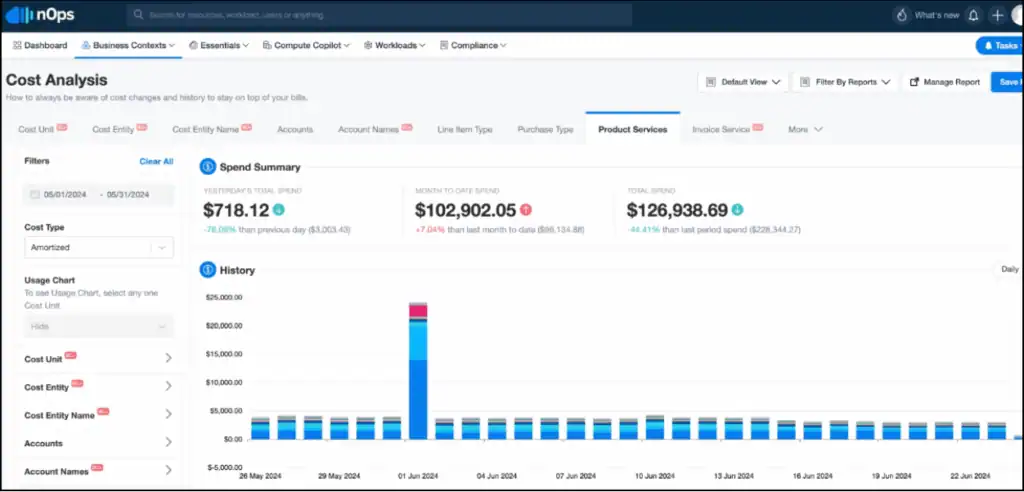
nOps is a cloud cost optimization platform primarily focused on AWS environments, but it also offers emerging support for Azure and GCP. Like ProsperOps, it provides automated commitment management for Reserved Instances and Savings Plans.
Key features:
- Real-time cost tracking with granular visibility across AWS and Azure
- Automated resource optimization using Compute Copilot
- Intelligent Spot Instance, Reserved Instance, and Savings Plan management
- Security and compliance tracking aligned with AWS best practices
- Autodiscovery for Azure cost center allocation
Note: nOps is a point solution focused on cost optimization. Therefore, for full FinOps coverage, it’s best paired with a comprehensive FinOps platform.
20. Xosphere
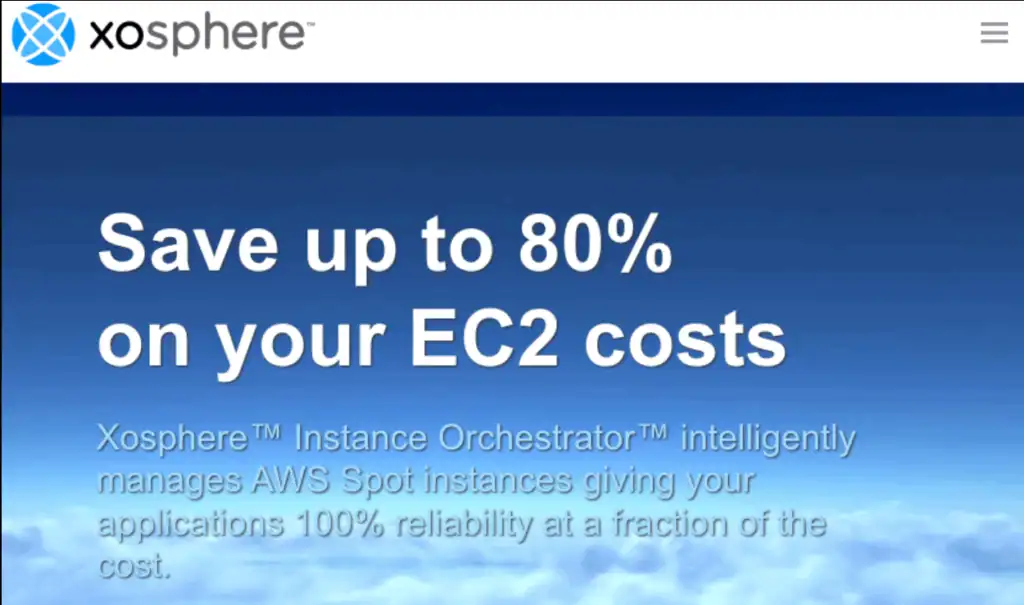
Xosphere might not be the flashiest name in cloud cost management software, but when it comes to cutting EC2 costs, this tool deserves a mention.
Specializing in Spot Instance orchestration for AWS, Xosphere automates the switching between On-Demand and Spot Instances. This way, your applications remain up and running without interruption.
Key features:
- Seamless integration with Amazon Auto Scaling Groups
- Installation is refreshingly simple (10 minutes via CloudFormation).
- ML-powered instance selection based on workload behavior
- High availability via distribution across instance types and zones
Note: Xosphere is purpose-built for Spot Instance optimization. For full FinOps coverage, it’s best paired with a comprehensive FinOps platform.
Have Ternary by your side for multi-cloud cost management
Ternary gives you deep visibility, actionable optimization insights, and seamless FinOps collaboration.
Explore our platform to see how Ternary can help your team take control of your cloud costs, reduce waste, and scale efficiently.
Control multi-cloud costs today.

